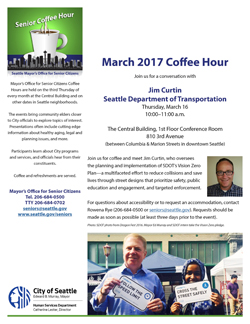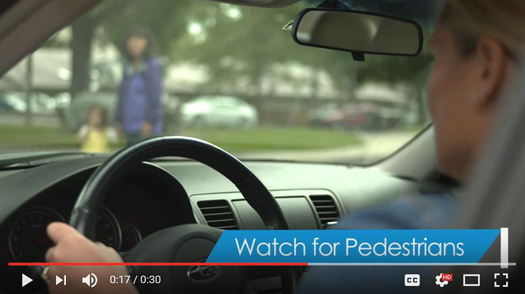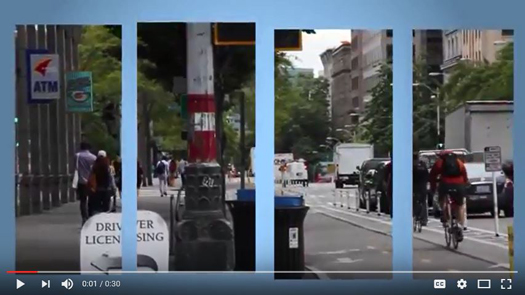Making Seattle’s Streets Safer for Everyone
Did you know that more than 900,000 vehicles travel Seattle’s streets every day? These bus, freight, and car drivers share the road with the many thousands of people who walk and bike our streets every day. While Seattle operates one of the safest transportation networks in the world, our busy streets present opportunities for conflict.
Seattle strives to minimize those conflicts and be the most pedestrian-friendly city in the nation. Our Pedestrian Master Plan guides our approach to making it easier for people of all ages and abilities to walk, and our Vision Zero program identifies specific engineering, enforcement, and education tools to use in our effort to end traffic deaths and serious injuries on our streets by 2030.
While we’re a safe city, there’s room for improvement. We see more than 10,000 crashes each year, resulting in close to 20 deaths and another 150 serious injuries. These are so much more than statistics. These are our neighbors and friends. People who may have been walking to work or on their way home to their families. Their lives are cut short or changed forever, impacting their immediate circles and broader communities. We believe that one life lost or altered is one life too many. It’s time to make Seattle’s streets safer for everyone, especially for our most vulnerable travelers—people walking and biking.
Approximately 500 pedestrian collisions occur every year in Seattle and data show that between 2012 and 2016, one group of people was affected more than others—older pedestrians. Sixty percent of individuals involved in the most serious pedestrian collisions in Seattle are age 55 or older. Through a combination of engineering improvements, educational outreach, and increased enforcement patrols, Seattle is making efforts to keep our elders safe.

Click above for information about the March 16 coffee hour with Jim Curtain from Seattle Department of Transportation.
Walking is a great way to stay active. The Seattle Department of Transportation (SDOT) has put together some helpful tips to make your daily stroll a safe and comfortable experience:
- Be seen. It’s no surprise—Seattle can be rather rainy and dark, so visibility plays a crucial role in staying safe. Wear bright-colored or reflective clothing to stand out.
- Know your abilities. SDOT has installed pedestrian countdown signals at many intersections to help you understand how much time you have to cross the street. Know your walking speed and don’t start crossing when the “Don’t Walk” symbol is flashing.
- Scout your route. There are all sorts of hidden gems to discover in our city. Use our walking route maps to determine the best way to get from Point A to Point B.
- Look, smile, wave. Make sure drivers see you before entering a crosswalk, and continue looking out for vehicles while you’re crossing the street. Once you’ve crossed, a simple wave and smile can help reinforce goodwill on our streets.
- Tell us what needs fixing. Do our signals provide you with ample time to cross the street? Do your sidewalks need repair? If there’s something in your neighborhood that’s making it difficult to get around, let us know. Simply call 206-684-ROAD so we can get working on it, or report an issue online.
Contributor Jim Curtin leads Vision Zero: Safer Streets for Seattle at Seattle Department of Transportation. Jim is the featured speaker at the Mayor’s Office for Senior Citizens’ monthly coffee hour on Thursday, March 16, 2017. Questions? You can e-mail him at jim.curtin@seattle.gov.
![AgeWise King County [logo]](https://www.agewisekingcounty.org/wp-content/themes/agewisekingcounty/images/logo.png)


